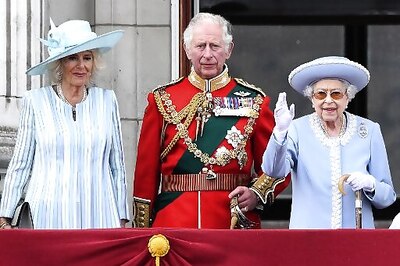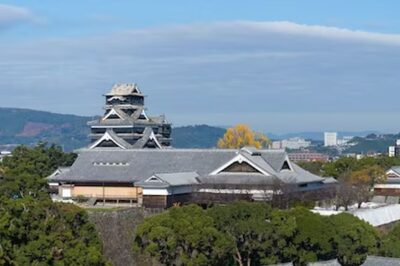
views
Albert Sutton paid just more than $1 million for something that many rich people dream of — a private island. Then he bought a second island, 400 yards away, for $450,000.
The purchases put Sutton, a pathologist turned real estate investor, in the universe of better-known island owners like British entrepreneur Richard Branson and actors Leonardo DiCaprio, Mel Gibson, Eddie Murphy and Johnny Depp.
But Sutton’s islands are not in the Caribbean or the Pacific, as theirs are. His islands are a five-minute boat ride across Long Island Sound from New Rochelle, New York, less than an hour north of Manhattan.
The poet John Donne wrote that no man is an island — "every man is a piece of the continent, a part of the main." But when the continent is a mile away, it is not easy being the man who owns the island.
“I thought I would have great thoughts out here,” he said, standing on his doorstep on Columbia Island, the smaller of the two.
Many of the thoughts he has had in 14 years as an island owner were about money. He said he had spent $8 million on renovations, including solar panels for electricity and a desalination unit for drinking water.
He even imported thick metal “hurricane doors” from Norway. “They’re blast proof, waterproof, fireproof, everything-proof,” he said.
Sutton’s Columbia Island is one of dozens just off the coasts around the New York City region. Most are smaller than, say, the 413-acre city-owned Rikers Island, with its complex of jails and troubled history of violence and mismanagement. New York City also owns North Brother Island, 20 acres that were once home to the disease-spreading cook better known as Typhoid Mary.
These spits of land have an unusual symphony of names — Potato Island, Pea Island, Rat Island, Davids’ Island, Tavern Island (“comes complete with a mansion so beautiful even Marilyn Monroe attended parties there,” Elle Décor noted).
In the 1990s, Donald Trump tried to buy Davids’ Island, which is across from Sutton’s Columbia Island, but ended up abandoning plans to build condominiums or town houses there (and losing a $500,000 deposit).
More recently, there were rumors that Trump’s daughter Ivanka was interested in Rat Island, 2 1/2 acres off City Island in the Bronx, according to Roland Veit, a coffee trader who became one of its two owners. He said she did not appear at the auction at which the other owner, Alex Schibli, snapped it up for $176,000.
“Leaving the mainland is everybody’s island dream,” said Rebecca Kinnear, the editor of Islands.com, a website that typically focuses on islands in warmer places than New York. “When you go to an island, you’re escaping the real world, leaving everything behind for, hopefully, palm trees and a perfect beach. Who wouldn’t want to own that?”
Schibli knew not to expect palm trees. This is New York, after all, and he could see Rat Island from where he lived on City Island. (But now there is something to see on Rat Island: a replica of a statue of William Tell, the Swiss patriot who is said to have famously shot an arrow into an apple on his son’s head.)
But for some owners, privacy is paramount, said John Campbell, a real estate broker with a $4.9 million listing for a one-house, 1.1-acre island in the Thimble Islands off Branford, Connecticut. “Short of some pirates coming out to the island, it is safe,” he said.
Nowadays there are island owners who value a getaway where the neighbors are neither nosy or noisy, because they are nonexistent. Some owners enjoy the bragging rights that come with owning one’s domain. Others have had to warm up to being an island owner. Veit, the coffee trader, said that for a year and a half after he bought his half-interest in Rat Island, “every time the topic came up, my wife was upset.”
“Then she went there,” he said, “and ever since, she has been a fan.”
Sutton made owning his own island sound more like the movie “The Money Pit” or the sitcom “Bless This Mess” than something relaxing and idyllic. He said he put money into necessities, like a decommissioned Navy vessel to get to his island and a barge that can carry about one tractor-trailer load of material from the mainland.
He also said he has had enough. He put the two islands on the market in May for $13 million.
“You know, I started in my 70s. Now I’m 85. I’m less adventurous,” Sutton said. “It’s not about me or my wishes or dreams any more. I can dream in a chair.”
Originally, his dreams did not include the larger Pea Island close by, but when it became available in 2015, he bought it as a safeguard. “It protects whoever is going to own this from having a hostile neighbor or anything like that,” he said, referring to Columbia Island.
There is nothing on Pea Island but trees and grass, and at about 4 acres, it is more than twice the size of Columbia Island. Exactly how large Columbia Island is depends on when measurements are taken. It grows and shrinks with the tide. A small sandy beach beyond the 14-foot sea wall disappears when the tide comes in and reappears, inch by inch, when it goes out.
The one building on Columbia Island was built as the base of a radio transmitter. It once supported a broadcast tower more than 400 feet tall for WCBS-AM (whose call letters when the tower went up in the 1940s were WABC-AM). But the station moved to another tower on a different island in Long Island Sound in the 1960s.
Sutton began investing in real estate in the 1980s after, he said, exposing a double-billing scandal at SUNY Downstate Medical Center in Brooklyn, where he had worked. “I had to get out” after becoming a whistleblower, he said.
He bought a building on Prince Street in Manhattan and converted the apartments to condominiums, he said. Later he bought a second building across the street and converted that into 22 condos. He retained the storefronts, which provided income as he bought more real estate, including a building on a stretch of West 46th Street known as Restaurant Row.
He also bought what he called “some land underwater,” 2 acres in the East River, just off Greenpoint, Brooklyn. “I couldn’t resist it,” he said. “How can you not buy 2 acres of land in New York for $200,000?” After about 15 years, he sold it for $2 million to developers who could build boat slips there, he said.
When he heard about Columbia Island, then owned by a nearby yacht club, it was love at first visit. The dilapidated building did not scare him off.
“I was cocky,” he said. “I had done a couple of condos. I said, ‘Yeah, I can do that.’ ”
But owning an island was different. He had to rip out the ordinary wallboard he first installed, replacing it with concrete-backed board that is resistant to water seeping through walls. To keep the basement dry, his contractors installed a three-pump system that can handle a storm surge; it can drive out 60,000 gallons of water an hour.
And landscaping was a challenge. He first planted honey locusts and shrubs that would do well on the mainland. They died in the salty air. Now he has mulberry and kwanzan cherry trees.
And while WCBS must have had an electric cable from the mainland, it was long gone when he arrived. He opted for solar panels on the roof, with a backup system for cloudy days — two 50-kilowatt generators.
For all that, Sutton said he had spent only one night on the island.
“It never really occurred to me that, gee, I should spend more time there or get more pleasure out of it,’’ he said. “I was here to make it beautiful and let it realize itself.”
James Barron © 2019 The New York Times




















Comments
0 comment